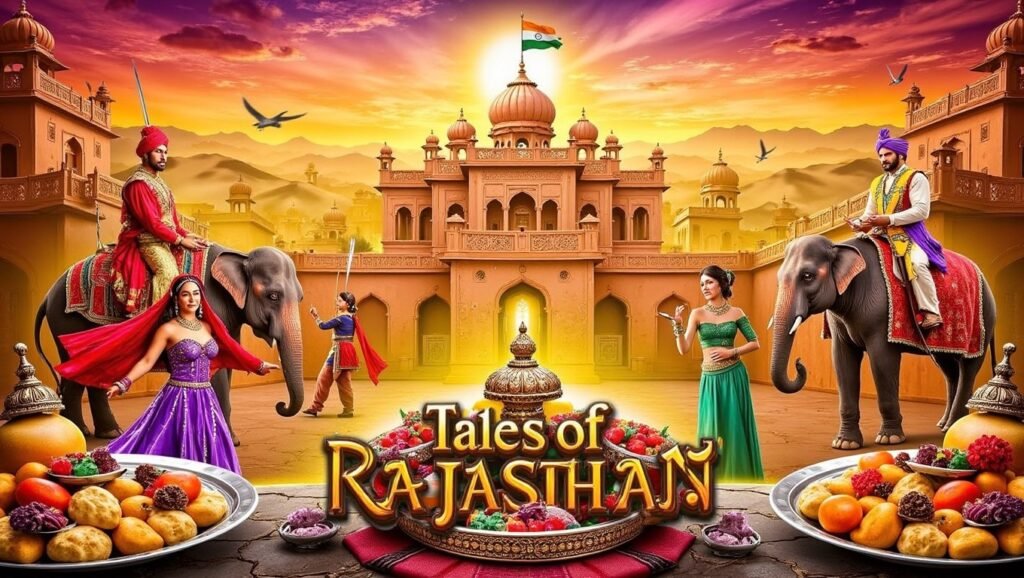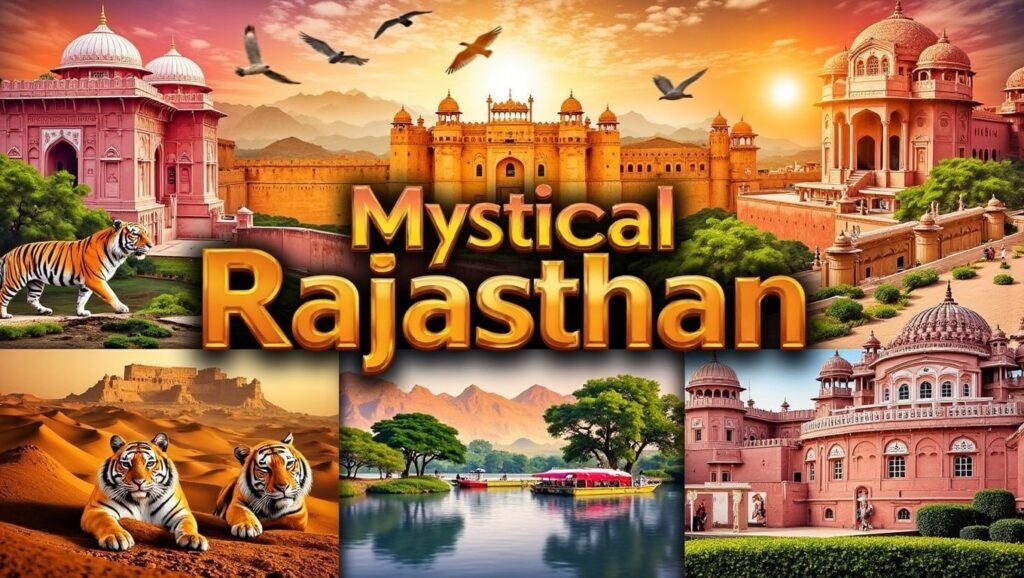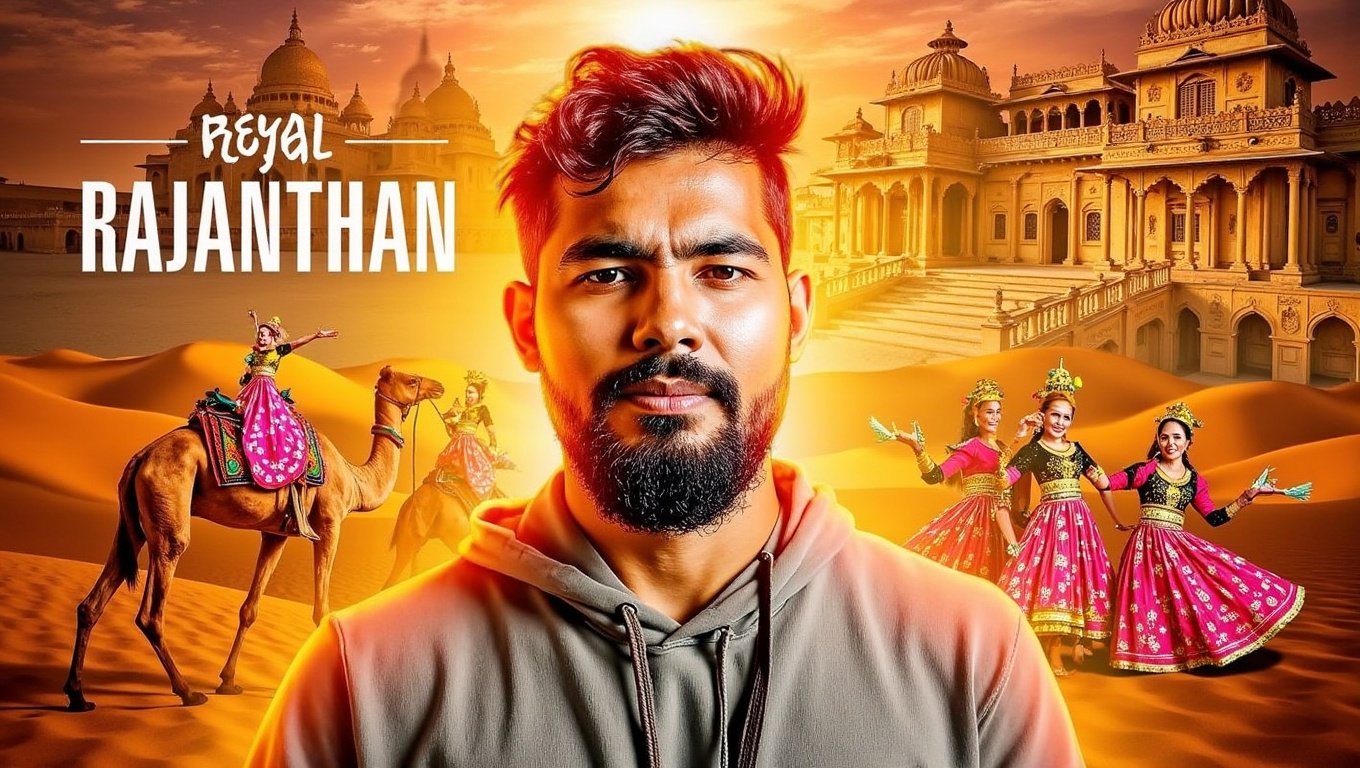Table of Contents
Tales of valour, huge palaces, sumptuous delicacies and a heritage marked with pride are a few terms that come to the mind instantly when we think of Rajasthan. It has always been the seat of royalty for centuries on end highlighted by interesting legends and proud kings who gave Rajasthan the pedestal that it stands on today. Gracious hospitality is another factor that Rajasthan is famous for.
The state enfolds in its lap a diverse kaleidoscope of nature ranging from shimmering sands to rugged ranges of Aravallis and Vindhyas to lovely landscapes. It is the mystique of nature that enchanted the royal dynasties of the bygone era that added a resplendent touch tothe state by building some of the most opulent palaces, formidable forts, ornamental gardens, exquisite temples and colourful havelis. Each of them is a relic of the golden past and each an architectural masterpiece having a legend of its own. From here emerged some great tales of heroism and romance still echoing in the golden landmarks that dot the entire state.
The state is diagonally divided into the hilly and rugged southeastern region and the barren northwestern Thar Desert, which extends across the border into Pakistan. There are plenty of historic cities, incredible fortresses awash with legends and rare gems of impressionistic beauty. Rajasthan has long been regarded as the real home of traditional Maharajas. Today, the cities of Jaipur, Udaipur, Jodhpur and Jaisalmer what were once seats of Rajput power have become popular tourist destionations in India for both national as well as international tourists. From the richly painted havelis of Shekhavati in the north to the magnificent jain temples of Mount Abu or Ranakpur in the south the state’s wealth of history and art provides a unique opportunity to see something of a disappearing world.

Sand dunes, wooded hills and amazing lakes, palaces, rugged forts, men and woman in colourful turbans and skirts, bustling towns and quiet villages, camels, elephants and tigers, harsh sunlight and the cool evening breeze are all there in abundance. The land comes alive with exuberant folk dances and music, ballads and spectacular festivities that are an inseparable part of the Rajasthani culture. Especially enchanting are the evenings here; with local dancers swaying to the melodious folk tunes echoing through the solitude of shimmering sands in the moonlight. Rajasthan is also renowned for exquisite miniature paintings and frescoes, not forgetting the incredibly fabulous Rajasthani fabrics and jewellery along with a wide range of beautiful handicrafts. The state is a treasure house of the best Indian handicrafts that attracts tourists from all over the world. The cities of Rajasthan retain the medieval flavour keeping alive the timeless traditions in their rich art and crafts, colourful bazaars and vibrant people wearing multi-hued costumes and a bright smile.
So get ready to unravel the land of superlatives and you will return enriched with Rajasthani colour, crafts and lots of unforgettable memories!

Fairs and Festivals
The Rajasthanis’ love for colour and joyous celebrations is proved by the elaborate rituals and the gay abandon with which they surrender themselves to the numerous Fairs and Festivals of the region. In addition to the festivals celebrated by the Hindus, Muslims and other, there are also the traditional fairs.
The landscapes certainly does not inspire with its long streches of sand dunes and a desert which has no colour. Yet, the Thar, and with it all of Rajasthan, is known as the most colourful desert in the world. Festivals and celebrations, music and dance punctuate its barrenness, turning the land into a fertile basin of colour and creativity.
Joyride Air Fair at Pushkar
Since last year the flying fest is been organized jointly by Sky Waltz and the Government of Rajasthan. Sky Waltz operates regular hot-air ballons flights for tourists during the season (October to March) in Jaipur. Yoor can also catch one at the Nagaur Fair (February) as well as at the Jaisalmer Desert Festival (February) The flights are about an hour long and you get a flight certificate to flaunt.
Jaigarh
Above the palace on the hilltop stands the gigantic bulk of jaigarh. The Fort of Victory is a rugged fort built in 1726 by Sawai Jai Singh. It was the royal treasury for several years. This is one of the few military structures of medieval India, retaining its ancient splensour in palaces, gardens, reservoirs, a granary, an armoury, several temples, and a tall tower. The world’s largest cannon on wheels-the Jai Ban is to be found here. Also of interest is the intricate water supply and storage system which is considered a marvel of planning. The fort has its own museum and provides some excellent views of Amer palace. The extensive parkotas (walls), watchtower and gateways of Jaigarh dominate the western skyline.
Jai Samand Lake
6 Kms, by road from Alwar, it is a large artificial lake constructed by Maharaja Jai Singh in 1910. It makes an excellent picnic spot during the rainy season with beautiful greenary all around.
Gagron Fort
This fort was the Capital of Khicchi Chauhans. The foundation of this magnificent fort was laid in or around 7th or 8th century AD. It is surrounded on three sides by the waters of the Ahu and Kali Sindh rivers and is an ideal example of a Jaldurg.
Devgarh
This is a magnificent 16th century fort near Pratapgarh. It has beautiful palaces decorded with ornate murals and splendid Jain Temples.
Ramgarh
Further north, on the Churu road, was settled by the Poddars in the late 18th century. It is famous not only for the havelis but also for its rusric wood furniture.
Heliodorous Pillar
3Kms after crossing the Betwa River, the Heliodorous Pillar, a free-standing monolithic column, similar to Ashokan pillars but much smaller. A monolithic, free-standing columns, the pillars bears an inscription which states that it was a Garuda Pillar, raised in honour of Vasudeva by Heliodorous, a resident of Taxila.




